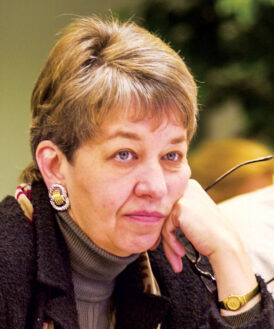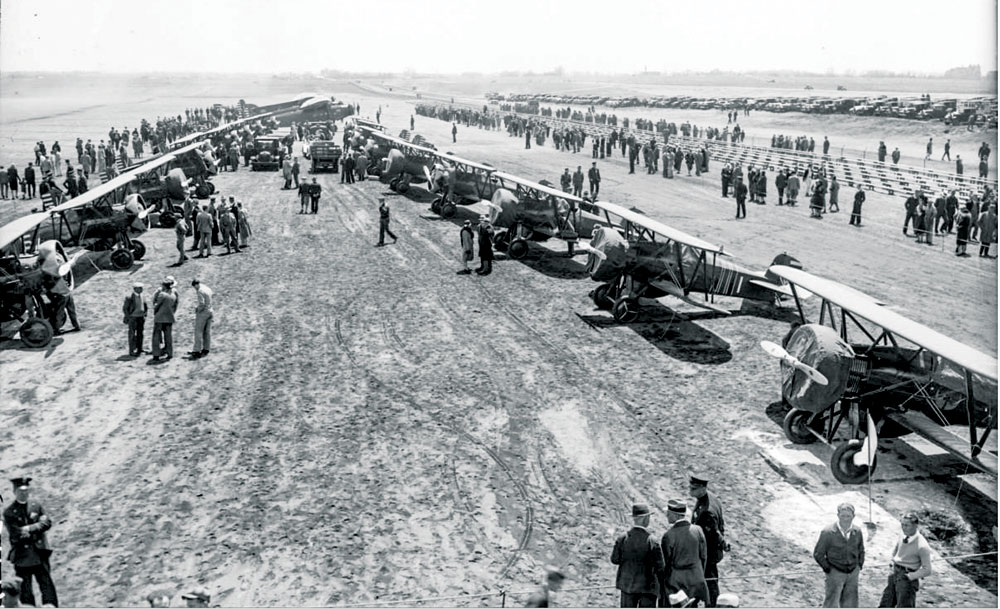
This article is reprinted from the 2000-01 Winter issue of Front Porch
 By Alice Kelly, Boardmember, Stapleton Development Corp. and the Stapleton Citizens Advisory Board
By Alice Kelly, Boardmember, Stapleton Development Corp. and the Stapleton Citizens Advisory Board
While many are familiar with the history of Stapleton International Airport in the latter years prior to its 1995 closure, not as many are aware of the airport’s earlier history around the time it opened in 1929 as the Denver Municipal Airport.
![]()
Early History
Archeological excavations in the Stapleton area have uncovered grinding stones and pieces of fire-blackened cooking hearths that were thought to have been left by Native Americans in the area between 3500 BC and 1000 AD. Among the tribes were the Apache and Pawnee in the 1500s and the Cheyenne and Arapaho in the 1700s. Three historic trails utilized by traders crisscrossed the property.
According to records of the Bureau of Land Management, Section 21 of the Stapleton property, which was under the ownership of the U.S. Government, was given to the State of Alabama as payment for soldiers who fought in the Civil War. Certificates of scrip, usually 160 acres, were given to those soldiers. The amount of acreage depended on length of service, rank and whether or not a recipient had been wounded. It is not known what the soldiers did with this land.
In 1886, a parcel of land that encompasses much of the modern day Park Hill neighborhood was purchased for development by Baron Eugene Von Winkler. When the developer died before he could begin work on the property, the land was sold to investors who envisioned high-priced homes for the site. The construction on those homes began in 1900.
On the eastern side of the future airport was the city incorporated in 1891 as the town of Fletcher. Named after a former president of the Denver Chamber of Commerce, it later became the City of Aurora. To the north was a farming community settled by Danish farmers. Grain elevators were erected on that property in 1938 by the Hungarian Flour Company. In 1952, it was incorporated as Commerce City.
Another neighbor of the future Stapleton was a farming community settled in the mid 1800s. In 1942, the U.S. Army acquired that land to make weapons for WWII at a facility named the Rocky Mountain Arsenal. In 1992, that land was designated by the U.S. Congress to become the Rocky Mountain Arsenal National Wildlife Refuge.
Other communities in the vicinity included Roydale, Berlin, Independence, Sandown and Sable. Most of these communities grew up along the railroad. Sable was originally known as Schuyler (1880) and later (1892) Magnolia. Independence, located between 51st Ave. and 56th Ave., stretching from Yosemite St. to Havana St., was vacated in 1890. The community south of the airport property was Montclair, which was annexed to Denver in 1902.
Early Airfields
Nearly a decade after the first airplane flight occurred in Denver in 1910, the Curtiss-Humphrey Airport (also known as the Western Flying Service Airport) opened at 26th Ave. and Oneida St. Its name was later changed to “Park Hill Airfield.”

This photo, taken in May 1931, shows people walking among airplanes parked at Denver Municipal Airport during a visit by the 95th Pursuit Squadron of the U. S.Army.
Lowry Airfield, also known as Combs Air Park, was built in 1923 at 38th Ave. and Dahlia St. Other airfields in the area included Sky Ranch Airfield on E. 40th Ave., and Higley Field on 26th Ave., which was used by the Civil Air Patrol.
Denver Municipal Airport
In the late 1920s, Mayor Ben Stapleton cited the economic benefits for creating a municipal airport that “could become the ‘Union Station of the Air.’” While a number of sites were suggested for the new airport, the mayor preferred a site known as “Sand Dune” or “Rattlesnake Hollow.” The boundaries of the property were present day Ulster St. on the west, 26th Ave. on the south, E. 38th Ave. on the north, and an unnamed street on the east.
The site selection became controversial when it was learned that the site preferred by the mayor was owned by the Holstein Land Company in which a personal friend was a major shareholder. The land was used by the Windsor Farm for cattle grazing and was the site of the old City Park Dairy, which remained in operation, marked by red lights, during the early days of the airport.
Mayor Stapleton favored the proposed site because it was not close to existing developments and was cheaper than sites closer to the downtown area. Opponents charged that the land was too sandy and not suitable for runways. Both daily newspapers criticized the mayor’s choice, with the Denver Post referring to the site as “Stapleton’s Folly.”
Nevertheless, the Denver City Council approved purchase of the Sand Creek site for Denver Municipal Airport on March 19, 1927 and later appropriated $175,000 to purchase the 640 acre site. Following the dedication of the airport in October 1929, $287,000 was spent on the construction of four gravel runways, lighting (which reportedly illuminated the ground but also blinded the pilots), a terminal building, and a hangar thought to be one of the largest in the nation. Air shows were held frequently and one of the most popular tenants of the new airport was “Mom Williams’ Skyline Buffet.”
Under the guidance of Denver city planner Saco Rienk DeBoer, beautiful floral displays were planted at the entrance to the airport, much like those at Union Station. The new airport was fast becoming the place for the family to visit on Sundays.
True to his reputation as a “penny-pincher,” Mayor Stapleton ordered coin-operated turnstiles for the observation deck and the installation of vending machines that sold everything from combs to flight insurance. Nearly $45,000 a year was raised by pay toilets until a group of activist women successfully forced the city to end the practice in 1974. Mayor Stapleton also added to city coffers by allowing wheat to be grown on the site. The wheat was sold and the proceeds went into the city’s general fund.
In 1933, Amelia Earhart stopped at Denver Municipal Airport on her cross-country flight with her “Autogiro,” an early version of the helicopter. By 1945, the airport had increased its acreage to 1,435 acres, composed of four runways serving as many as 50 commercial flights a day.
In August 1944, Denver Municipal Airport was renamed “Stapleton Airport” in honor of Mayor Stapleton. The word “International” was added to the name in 1964 at the suggestion of the Denver Chamber of Commerce even though it would be another four years before Western Airlines began the first international flights to Calgary, Canada.
During the early history, 10 subdivisions were platted on the site but were not developed. Historic maps show that the site was in the process of being developed in grid form during the early period of the airport. As the airport expanded over time, the platted land was vacated.



0 Comments